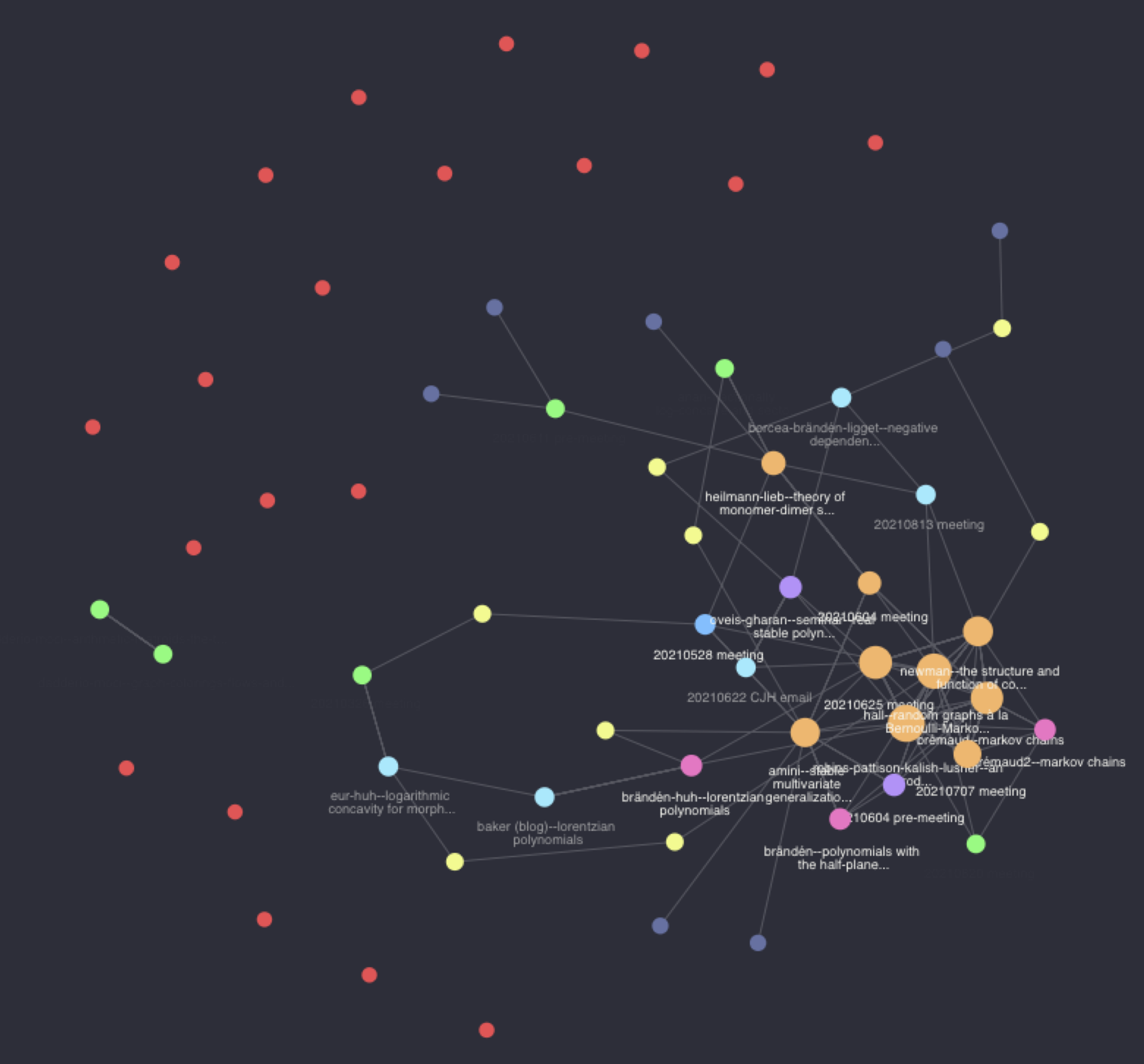My organizational workflow (org-roam x notion)
How does a grad student keep track of all the math they read, hear, or write? I ran into this question very early on in graduate school, and since then I was searching for an ideal system for the way I do math: writing and drawing things out. As an undergrad, I kept detailed paper notebooks for each of my classes and tabbed sections so that I could hop back and forth between notes. As a graduate student attending multiple courses and seminars over the years, this quickly became infeasible.
Even though I moved away from paper notebooks, I still wanted to keep all of my notes consolidated in one place. I used to record all of my notes digitally on my iPad as Notability/GoodNotes pdf files but that became unmanageable when the number of notes topped 100. Although the handwritten digital notes are searchable, I needed something that showed me an overview of all the topics and ideas that showed up again and again. Instead of axing digital note-taking completely, I began transferring my notes to digital files that had the capability to be converted into TeX files. I began1 an expedition to find the perfect platform (for my purposes) by trying out Obsidian. This is an application that stores Markdown files in one place with the ability to reference other notes within a note. You can hop from note to note and even see all of the note connections via a graph (yay - graphs!).
I enjoyed Obsidian for a while, but when it came time to TeX some of these notes, I had to manually transfer them over with no real solution of exporting directly to TeX. Then, in the summer of 2021, I took a course in mathematical computation and learned Haskell as part of my end-of-term project. When researching uses of Haskell in the real-world, I found an incredible open-source application called Pandoc (written in Haskell!). It lets you convert between a plethora of different document types, from TeX to Markdown to HTML and more. As part of this journey into learning Haskell, I discovered that it was well-integrated in Emacs, a text editor that does pretty much everything I needed to do (and more). I quickly transitioned my Obsidian workflow into Org-Roam, a much more intricate software that had all the functionality of Obsidian and then some. It is also very easily converted into TeX using the ever-handy Pandoc. This is all housed in Spacemacs (an Emacs distribution). The great thing about this setup is that I can easily shift my org files into $\LaTeX$ and vice versa. I now use org-roam to conveniently organize all of my research, meeting, and seminar notes in one place. I can also export these to pdf files that are beautifully TeXed and ready to be presented to the outside world.

So where does Notion come into play? Even before turning to Obsidian, I used Notion to house all of my math notes. Although the interface is wonderful, I needed more customization and the ability to edit and view my files offline. I also ran into the same Obsidian-esque issue of not being able to smoothly export files to TeX. I continue to use Notion on a daily basis, but as a task manager rather than a note-taking app. I find that it has an unmatched functionality for scheduling long-term projects and small daily tasks.
This workflow has been working wonders for my productivity and organization, being able to hop between notes and really think in a concise way has led to new insights. But, who knows, maybe some tweaks can be made - as with all things - to improve it even further. Stay tuned for future updates and happy 2022 in advance!
-
well, not quite, I started with trying Notion, but more on that shortly. ↩


Leave a comment